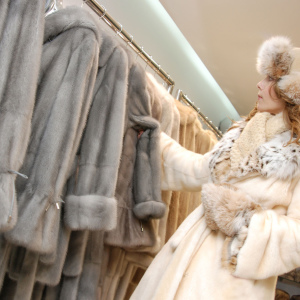In winter, wild animals have hard. Everyone has their own plan how to survive the winter, they are prepared differently for severe frosts. Someone stored food, someone changes their robe, and someone is preparing a warm dwelling.
How proteins are prepared for winter
Preparations for winter are carried out throughout the year. They are stocked with nuts, acorns, mushrooms, berries, cones, as they eat only plant foods. They are carefully dried on branches, stumps and put in their home. Squirrels winter in hollows, but do not hibernate. They do not tolerate frost, so they spend most of them in winter in their houses. Proteins in advance equip the hollow with the bark of trees, moss, found feathers, etc. In the winter, proteins change their color from red color to grayish, in order to mask.

How beavers are preparing for winter
Beavers prepare their home in advance. They can place it at water level or under water. To do this, they demolish sticks, branches that are masterfully bind with algae, grass or fastened with clay. The house, built by the beans under the ice, is warm and safe. They do not freeze in the winter in the water, because their fur coat is watering. Beavers pre -prepare food for winter time. In winter, they do not hibernate, but reduce their activity, while reinforcing with food.

How badgers are preparing for winter
Winter for badgers is a difficult period in life, they poorly tolerate a low temperature. The beginning of autumn for badgers is characterized by the preparation of housing and collecting food for the winter. In order to survive the winter, they arrange a hole for themselves with herbs, branches, moss, etc. From food, they are stocked with nuts, acorns, plants, seeds, etc. They are sensitive to frost. Winter is carried out passively in the hole, eating stocks.

How hares are preparing for winter
Hares do not equip holes and do not make a supply of food for wintering. They tolerate fierce frosts on their paws. As a disguise, starting in the fall, hares change the color from gray to white. This gives them the opportunity to disguise themselves from predators against the background of snow. Well, if he was noticed by a wolf or a fox, he is quick to escape. The winter features in behavior also include digging temporary holes in snow or hay. In such burrows, he rests and gains strength.

How foxes are preparing for winter
Preparation for winter begins with a coat insulation. Their wool becomes thick, down, bright. It perfectly protects them from severe frosts. The fox lives year -round in burrows. Often, a place for digging a hole is a hill. So that the fox could view the whole forest. If she went far from her hole and a strong snowstorm began, the fox can temporarily settle in another abandoned hole. Before returning to the hole, she carefully confuses traces. The fox does not make reserves for the winter, but regularly goes hunting. Its prey is most often become rodents. For lack of meat, she can eat found berries or vegetables. Nature is so composed that in winter the metabolism of foxes is reduced. Subcutaneous fat, is wound to warm them in severe frosts. Fluffy paws allow foxes to move silently when hunting prey. Fox stand for severe frosts.

How wolves are preparing for winter
Wolves tolerate the wolves easily. To the cold, their wool becomes longer and fluffs. She warms them perfectly in severe frosts. Often they run out onto the roads, paths to facilitate their run. The wolves have a characteristic feature - unification into a flock. They easily catch prey within a radius of 30-60 km, then eat it together. On average, the flock consists of 7-12 wolves.

How bears are preparing for winter
With the advent of autumn, the bear is puzzled by the search and preparation of housing for the winter. An ideal version of the den will be a crevice in grief, a hole in the ground. He carefully insulates it with branches, foliage, moss, etc. Before hibernation, the bear at an increased pace eats subcutaneous fat. This fat is gradually wasting throughout the winter. At the moments of the thaw, the bear can wake up for several days and start searching for food.

Wild animals are prepared differently and endure the winter. Someone lives severe frosts in motion, someone is overlaying them, hiding in their home, while others fall into hibernation. Nature correctly distributed features to all animals.






























